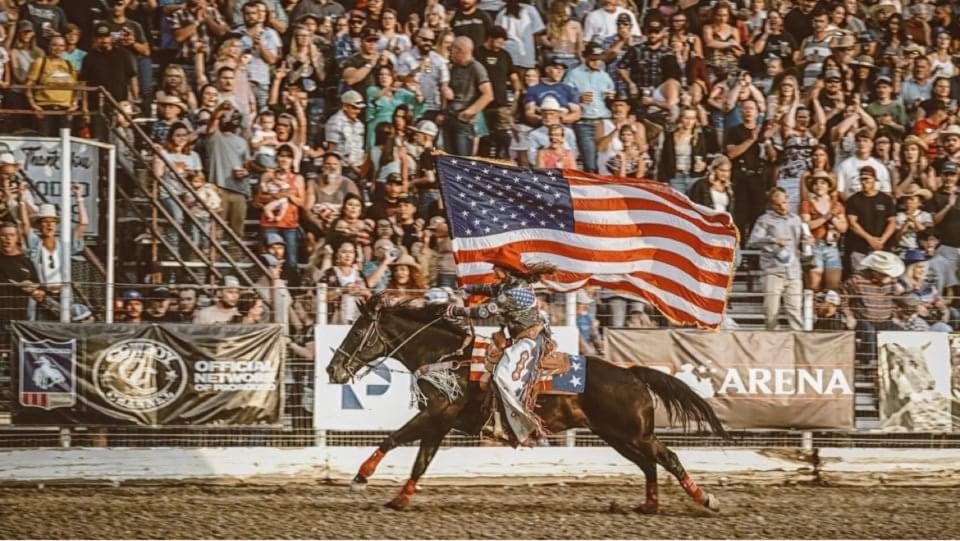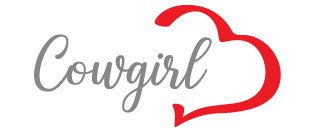
Thomas C. Duncan is first and foremost a professional Rodeo Photographer. Just name your favorite rodeo, and chances are he’s been to that arena photographing the action.
Based in Idaho for around 20 years, Duncan has been covering rodeo through his photography, podcast and through his book, Beyond the Tiara (www.tduncanphoto.com)
Being a rodeo photographer, Thomas Duncan photographs a lot of rodeos, from little bitty ranch rodeos all the way to major professional rodeos. People know him on rodeo grounds even when he’s not carrying his camera.
Rodeo Queens
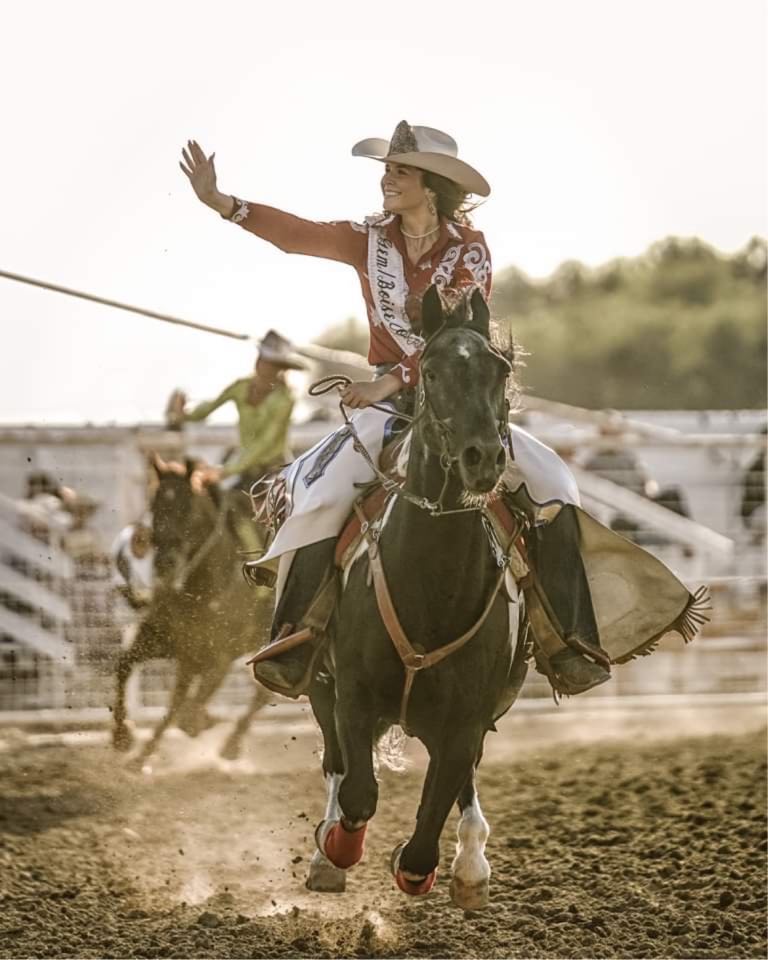


Photos: Princess Hailey Rae and 2018 War Bonnet RoundUp Queen Allie Marie Ward
The Rodeo Queen aspect of his photography is unique. He has become the unofficially adopted “Big Brother” to just about every rodeo queen. As a father to daughters of his own, Thomas Duncan understands these rodeo queens. Because of their titles, they are exposed to the public; moving through crowds and signing autographs, and when around, Thomas is one of their guardians. All of the girls in the book are people he knows. He took the opportunity to learn what they would like people to know about them. The subtitle to the book is “Real Life Rodeo Queens” The intention of the book was to show the human behind the hair, makeup, sash, crown, sequins and fancy clothes.
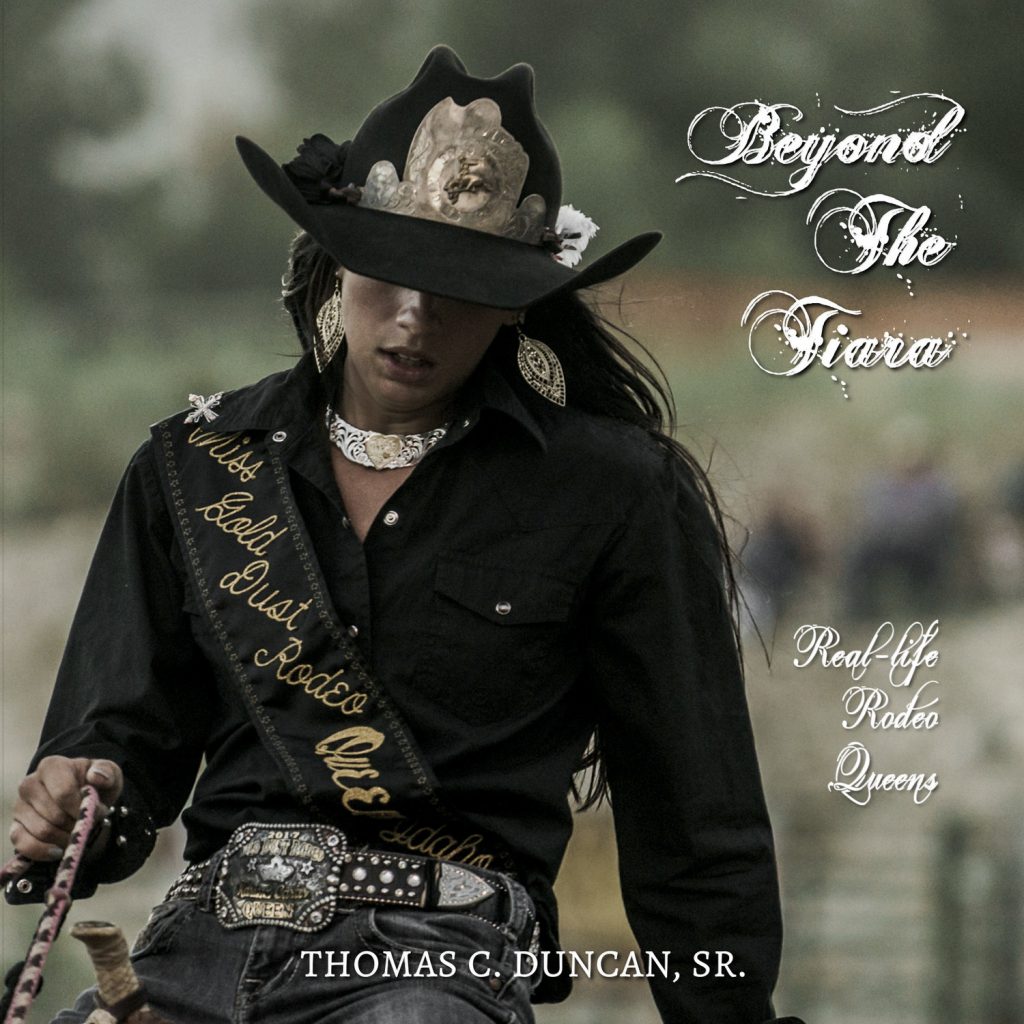
“Beyond the Tiara” is a compilation of photos and stories of rodeo queens. According to Duncan, “Most people see rodeo queens only during the most festive moments of events. What they all share is a love for their sport and their heritage, and they wear it as proudly as their shiny gold buckles.”
Chute Talk – The Podcast
Everything is planned, and yet rodeo is a highly unpredictable sport. Everybody working in the sport puts so much heart into what they have. This is a “pay to play” sport. It costs a lot of money for all of us to do our jobs. The amount of money that I spend on credentials, gear, travel expenses, lost time at other jobs, all these things. It is very expensive. And I’m the least important person at the rodeo. I’m at the bottom rung, so for me, to put my heart and soul and my money into this, it is a small fraction of what all these other people (stock contractors, volunteers), it’s a fraction of what they’re putting into it. Rodeo doesn’t just happen. It is a product of blood, sweat, and tears. It is a product of love and I wish that people could see just how much goes into this and how much of our heart goes into it. We love the stock. We love our rodeos. We love our community. We love our fellow contestants and we love our fellow contract acts. We put our all into making sure that this (sport of rodeo) survives and continues and we want it to look easy because you pay your $20 bucks plus a beer and we want you to see the very best performance that you can see.
When Covid struck the nation, quarantine made rodeo impossible. People couldn’t get to the rodeo, so Thomas Duncan took the rodeo to the people. The Chute Talk podcast was born and people had something to look forward to. Because of his relationship with local rodeo queens it was only natural to include their stories – beyond the sash. It was very natural to include rodeo queens to tell their stories and provide a platform for them to be able to show the world their hearts and not just their crowns! It is remarkable to learn that amongst these talented rodeo queens are brilliant artists, attorneys, and lobbyists.
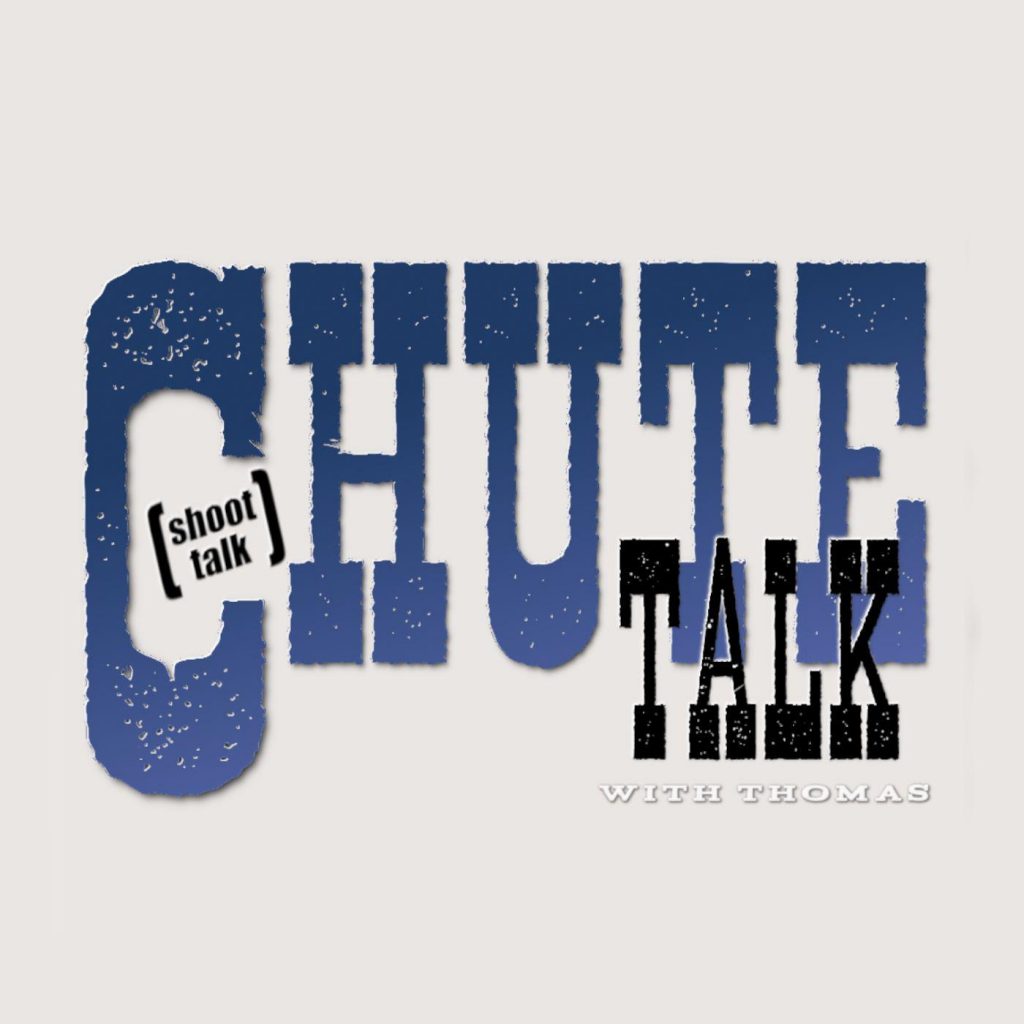
The guests who have been on the podcast are the who’s who of rodeo. Interviews include Barrel Racing Champions Hailey Kinsel and Bekkie Bowerman, World Champion Bareback Riders Tim O’Connell and Chad Rutherford, Professional Tie-Down Ropers Kyle Lucas and Haven Meged, Pro Rodeo Announcers Marty Campbell and Scott Allen, and Rodeo Queens Jordan Tierney and Taylor McNair. Also included are episodes on photography tips and techniques.
Q&A with Thomas Duncan
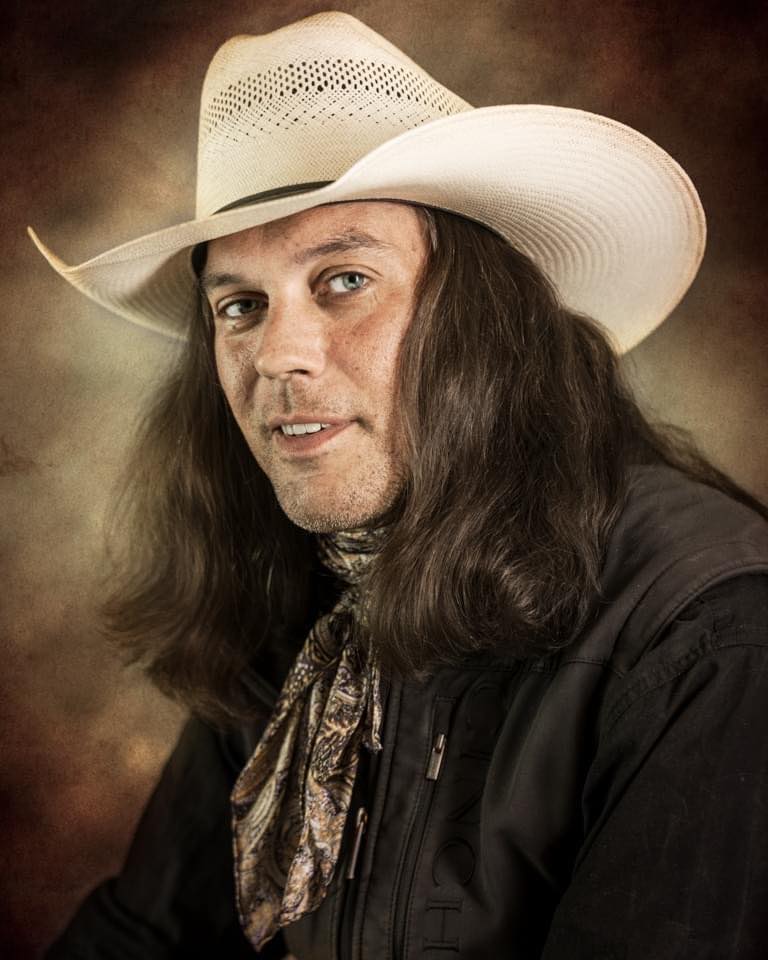
What are some of your favorite rodeos?
Duncan: “Nampa and Caldwell. Those are both top-level professional rodeos”.
At both of these rodeos, Duncan has photographed almost every single (NFR) finals contestant and nearly every single finals qualifier. Duncan is aiming to shoot the WNFR this year and has submitted his work and credentials to the highly selective committee.
Whether it is with words or images, Thomas C. Duncan is a storyteller. Whether in the arena with the cameras, editing photos, or when he’s posting, he considers his job a responsibility and a privilege to help whoever is in front of his lens and tell their stories and the stories of rodeo.
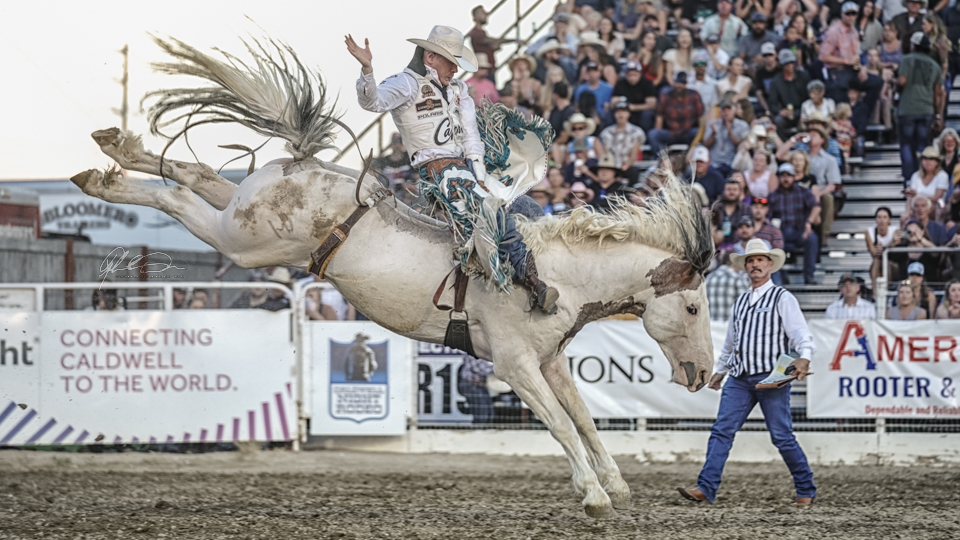
“If I shoot photographs of Tim O’Connell going 89.5 points on Two Buck Chuck at Caldwell, or Ben Anderson going 92.5 on Womanizer of Cervi at the Snake River Stampede; that’s not my story to tell…that’s Tim’s Story. That’s Two Buck Chuck’s story. I’m just the one who gets to provide the platform. When I post a photo of stock, I want those animal athletes to be seen at their very best because they don’t get to use words to tell us how awesome they are. I get to provide that platform. When people look at my photos, I don’t care if they know who took it. I put my watermark on it only to prevent it from being stolen”.
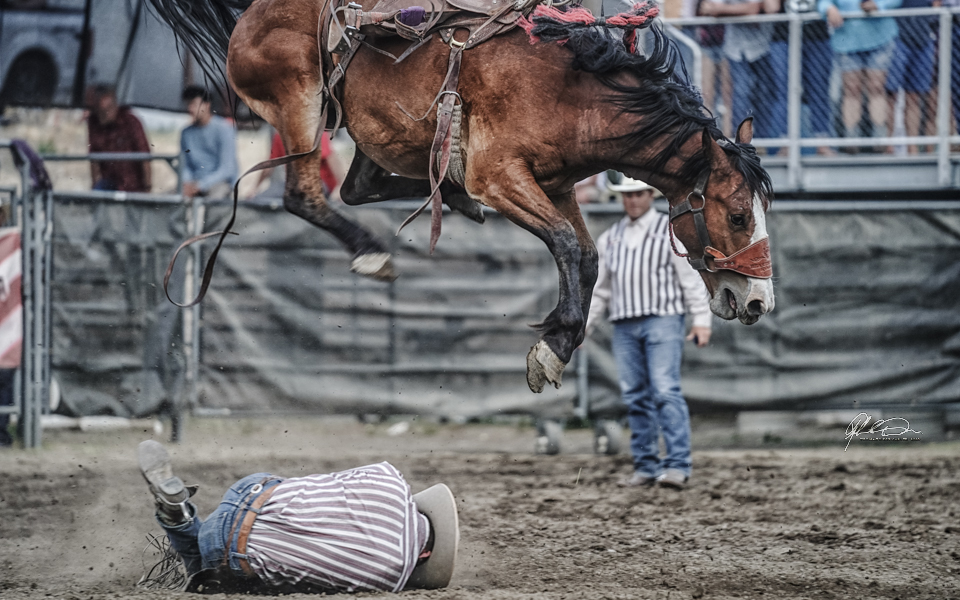
Of course it is dangerous to be in the arena. Period. Dangerous for everybody. It’s part of the appeal of rodeo. “If you know how to do your job, you can mitigate that as much as possible. You don’t get the good shots if you don’t risk it.” He captures the action, power, and athleticism of the animals. “If nobody knows who took that photo, that’s actually OK with me. If you know the story, if you can hear and feel what’s happening, if I can provide a sensory experience that says here what that moment was”
When I see your photos, I feel like I am right next to the action going on. Do you have a special technique that you use?
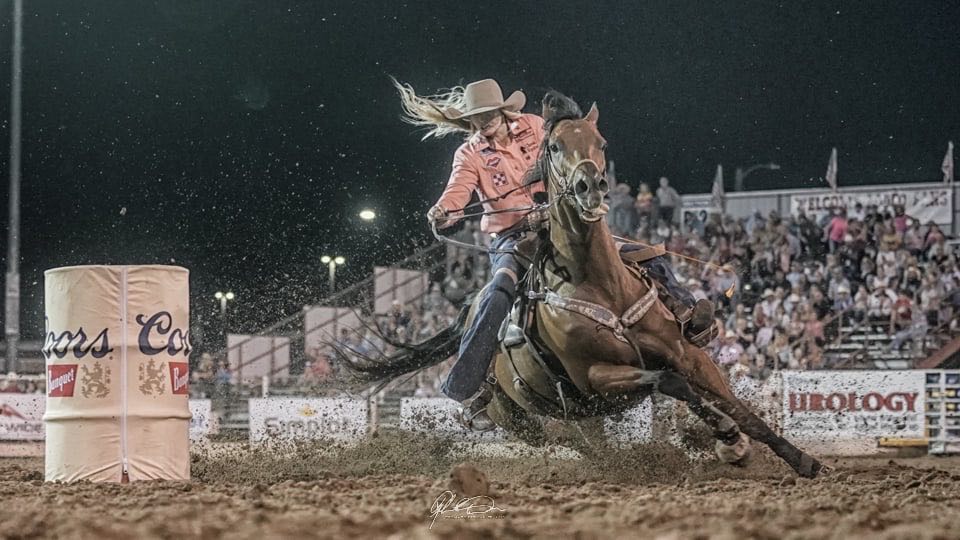
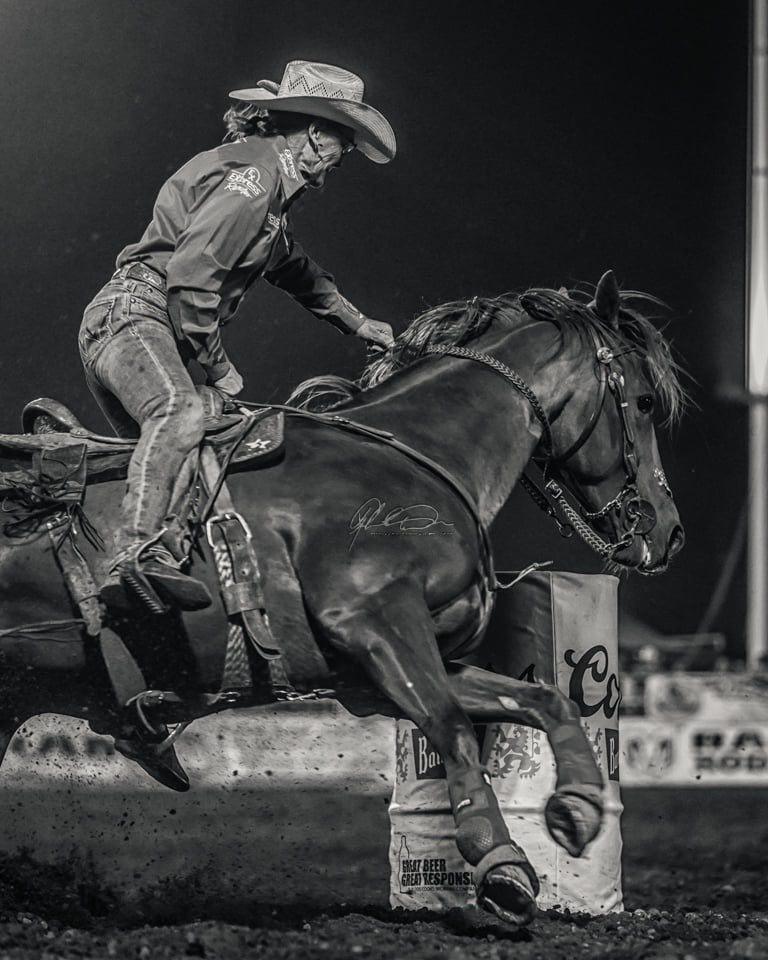
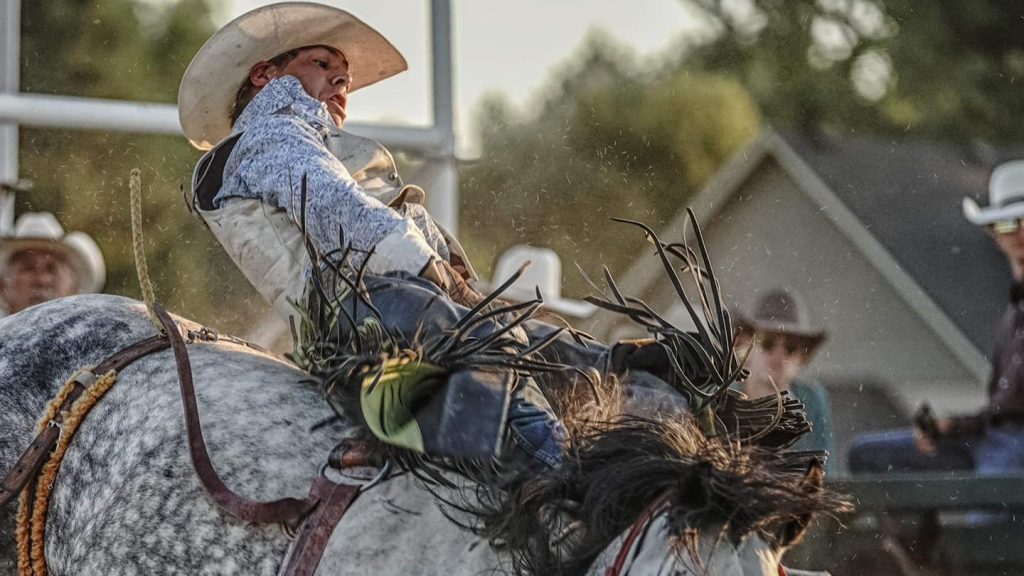
Duncan – I actually don’t shoot bursts. If I’m shooting bucking animals I’m shooting jump for jump – single frame at a time. With rough stock, it’s the rider’s job to time and it’s also my job to time them out and If I use a burst, I’m not in time with what’s happening. We all have our individual unique styles. You can talk to another rodeo photographer and their approach is going to be different. The technical and artistic differences that each of us make on an individual basis to do our jobs.
When it comes down to the tie-down roping, there’s a very specific fraction of a second that I’m looking for, when the bulldogging comes around; I’m waiting for that horse to go by and looking for that turn down in the dirt. For each event there are very, very specific things that I’m looking for, and then I go frame by frame, trying to capture that specific thing.
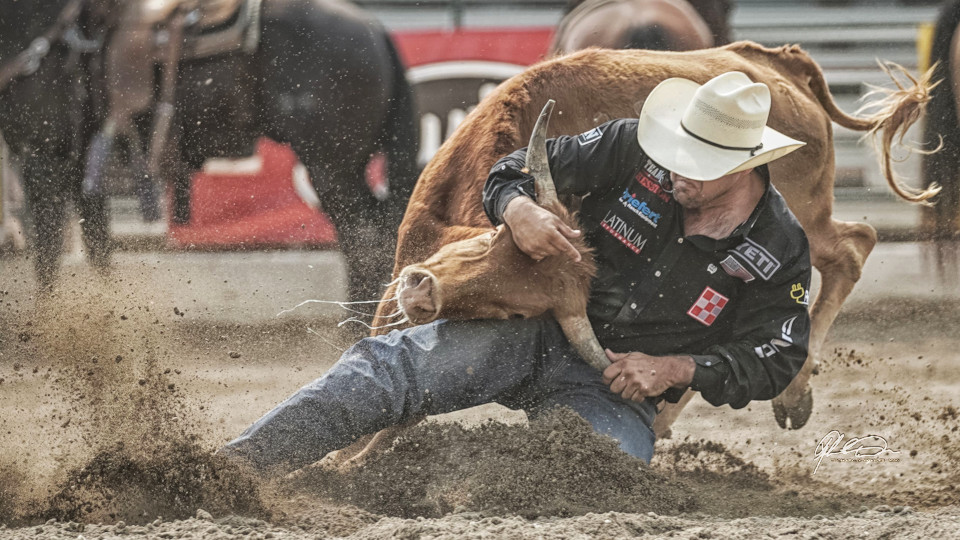
My artistic approach comes from the mind of an autistic synesthete (tactile sensations without the individual being physically touched). So, when I pull that photo up on my laptop of what I’ve taken from that night, I remember those moments as they just happened, and I want you to be back in that moment. I don’t want you to just see what I saw; I want you to hear what I heard, I want you to smell what I smelled I want you to experience what I experienced, whether that’s just the smell of arena dirt getting kicked up around you, the sound of the hooves, the snorting, the guys off the back of the chutes yelling “go on!” Whatever it is, I want those all to be compiled into one file (if you will) that’s going to bring to that same experience that I had in the moment, including the sensory input. My goal is to not to just bring you an image, but an experience.
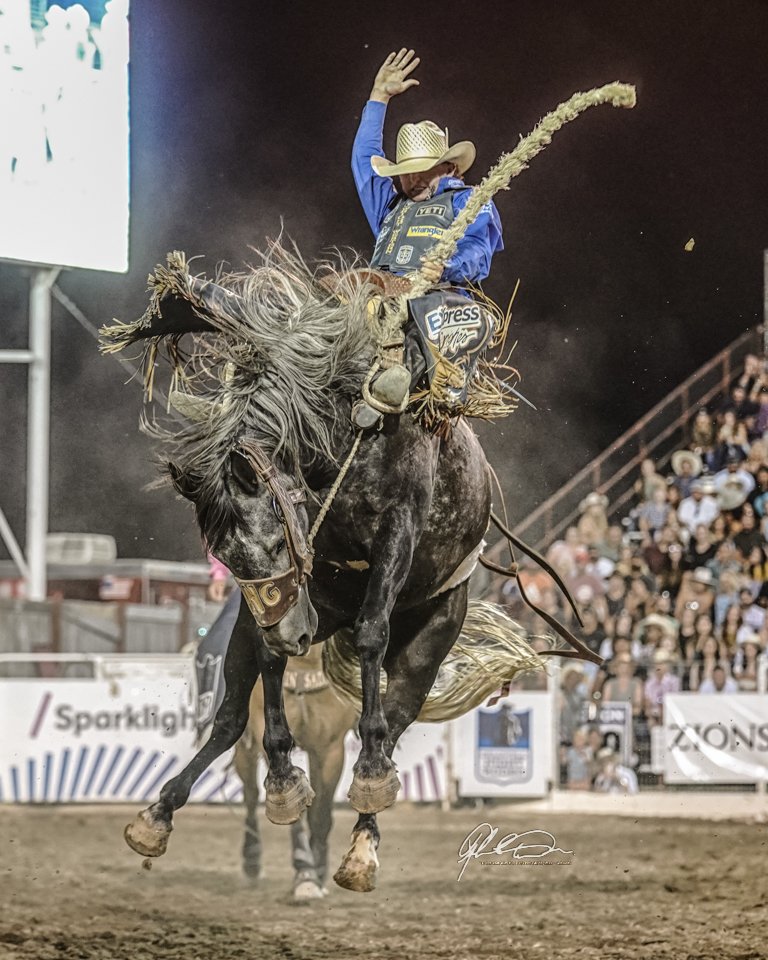
At most rodeos, my average shutter speed is 1/800 of a second. It will be much shorter if the sun is out, and it will be a little slower for indoor shows or outdoor night shows. I average roughly 800 photos in a performance, which means at the end of the night, I have one second of information! I’m in the arena for two to three hours. I will spend double that time just going through the photo files, making sure that everything is properly tagged, edited, set up and ready to go before I go through my equipment again and make sure everything’s ready for the next night. A lot of times I’m not done with the work from the night before. It takes that much time in processing and making sure only the best imagery is being put out there.
Question for Thomas – If there is one thing you wish people knew about rodeo and might not know, what would that be? (This is the question Thomas asks all of the people he interviews on his podcast)
Duncan – My podcast guests know the question ahead of time so they can think about their answer. Everyone says the same thing…There are so many things!
Many people who are not in rodeo don’t understand how much goes into putting on a rodeo. It’s easy to buy a $20 ticket, show up, grab a beer, sit in the seats and watch something unfold in front of you. It looks like it is just happening. But when that rodeo is over for the week, that committee is already sitting down, often the next day, talking about what can we do next year to make this even better?. And the next year’s rodeo begins the next day. It’s a massive amount of work, the heart that goes into every single aspect of rodeo. For example, when a sound engineer shows up, they are bringing trailers full of equipment that has to be put into place. Your announcer is researching on a constant basis; talking to contestants, looking up stats, finding information. The secretaries are working to make sure everybody has what they need behind the scenes so that they are taken care of. You have people working the ground constantly making sure that it is absolutely set and perfect for that rodeo. From the time you get up in the morning on the rodeo grounds people are already working for the next performance. The contestants roll in; they’ve probably just come in from the next town and barely gotten enough sleep. Sometimes they arrive barely before their name is called. They make their ride or their run and sometimes they’re out just that quickly.
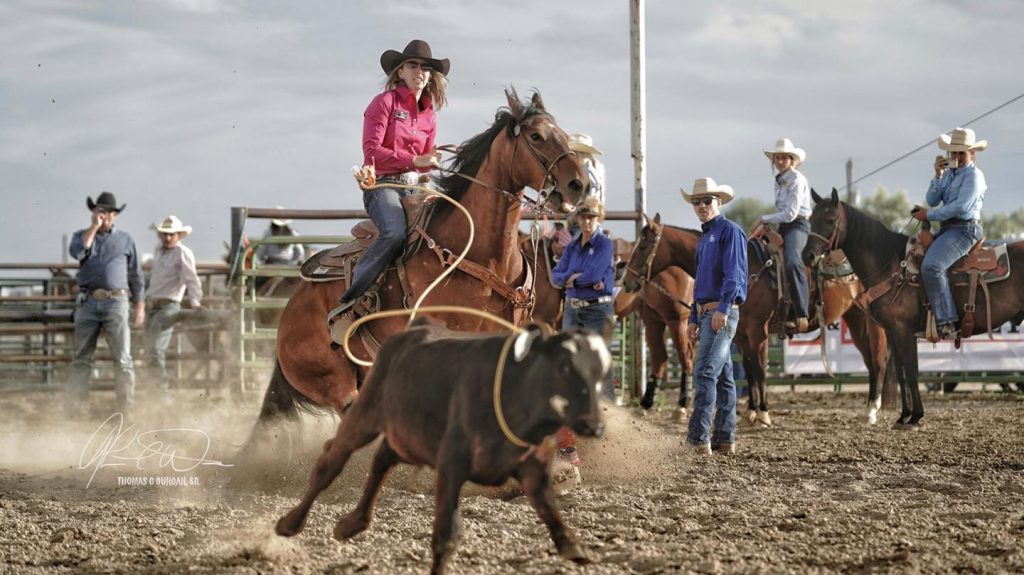

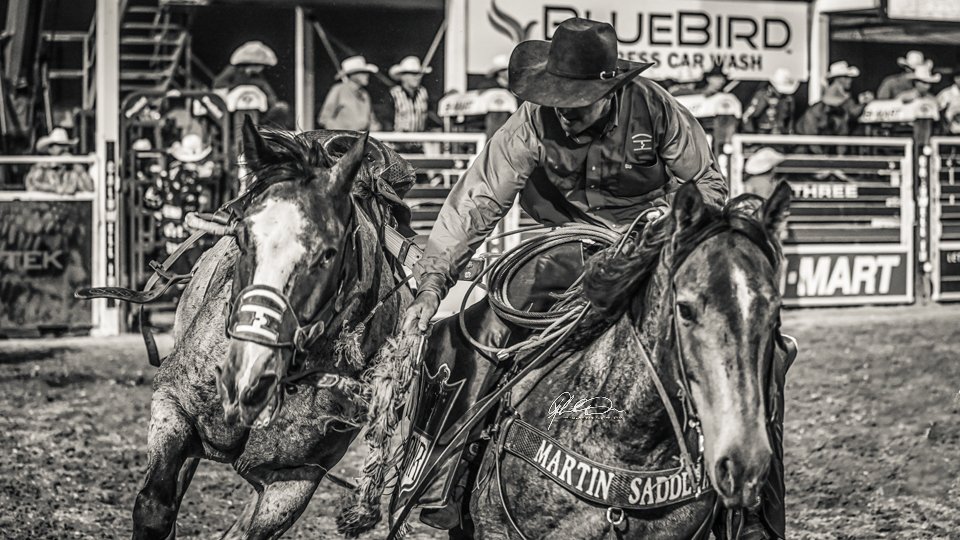
The fans see the pickup man coming in for the barebacks (and leave), come in for the broncs (and leave), come in for the bulls. Those guys are up at the crack of dawn feeding stock. When that’s done, they’re taking care of their own equipment, shoeing their horses, repairing their gear, they are running the stock through. They spend all day working, getting ready for the performance. Then after the performance, they are back out feeding, taking care of their tack. A pickup man’s job is so much more than just riding your horse in and helping the guy get safely off his horse. That’s all the fans see, but that’s alright!
All of us who work this job, no matter what our role in rodeo is; it’s just so much more than what is generally seen and understood. You have to have an utter passion for this or it’s not worth the time, the energy, or the money.
